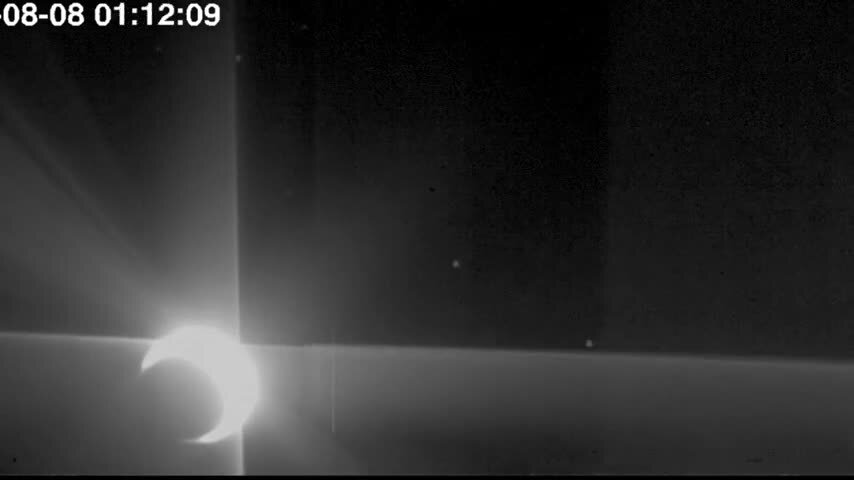
Credit: NASA's Goddard Space Flight CenterESA/NASA's Solar Orbiter spacecraft travelled within 4,967 miles (7.995 km) of Venus' surface on Aug. 9, 2021. The Solar Orbiter Heliospheric Imager (or SoloHI) telescope captured this stunning view of Venus in the days preceding the approach.These images show Venus approaching from the left, while the Sun can be seen to the upper right. The dark side of Venus, which is hidden from the Sun, appears in the images as a semicircle that is surrounded by a bright crescent glare from Venus’ brilliant sunlit side.We would have liked to be able to resolve features on the nightside, but there was too much signal from dayside. Phillip Hess, an astrophysicist from the Naval Research Laboratory, Washington, D.C., said that only a small portion of the dayside is visible in the images, but enough sunlight is reflected to create the bright crescent shape and diffracted radiations that appear to be coming from the surface.The background also shows two bright stars, which are visible before the planet eclipses them. Omicron Tauri is the rightmost star, while Xi Tauri is to its left. This is actually a quadruple-star system. Both are part the Taurus constellation.Footage of Venus captured aboard the Solar Orbiter Heliospheric Imager aboard ESA/NASAs Solar Orbiter. Credit: ESA/NASA/NRL/SoloHI/Phillip HessThis was Solar Orbiter’s second Venus flyby. There will be an Earth flyby in November 2021, and six more Venus flybys between 2022-2030. The Venus' gravity pulls the spacecraft closer to the Sun, tilts its orbit and swings it up and out to "look down" at the Sun. Solar Orbiter from this vantage point will eventually capture the first images the Sun's north- and south poles.ESA and Japan Aerospace Exploration Agency's BepiColombo mission flew by Venus on Aug. 10, just one-day later. See ESA's coverage to learn more about the double flyby, and view images from BepiColombo.Learn more ESA prepares for Venus flyby
